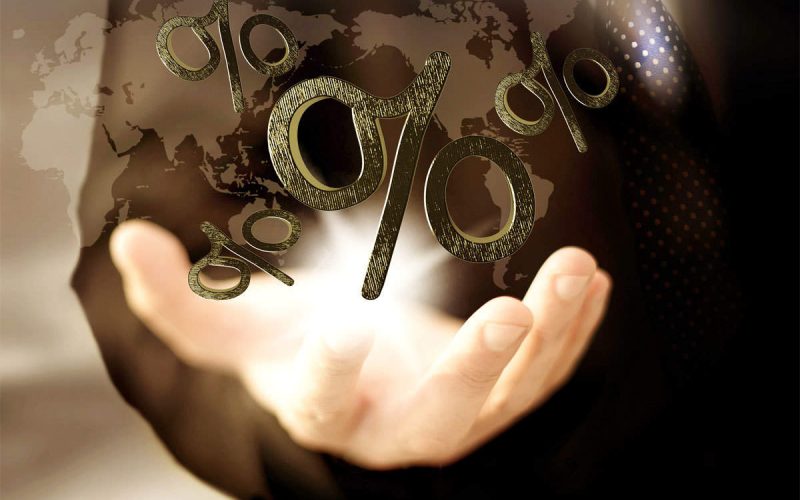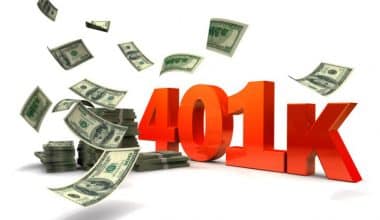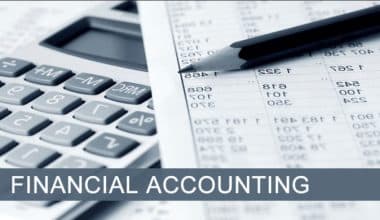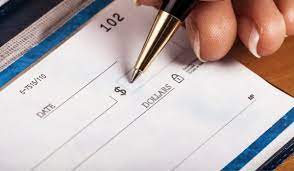The pricing of futures contracts is the market price of a financial commodity. With the modification for interest, duration, and dividends paid out with a contract. This article is here to have a clear understanding of the pricing of futures and their contract.
Pricing Futures
Futures are financial derivatives whose value is mostly determine by the price of the underlying equities or indices. However, the pricing is not as straightforward. There is still a price gap between the underlying asset in the cash and derivatives segments. We can explain this distinction by using two simple pricing models for futures contracts. These will enable you to forecast how the price of a stock futures or index futures contract will behave. They are as follows:
- The Cost of Carry Model
- The Expectancy Model
However, keep in mind that these models just provide a foundation for your understanding of futures markets. Having said that, being aware of these theories provides you a sense of what to expect from a stock or index’s futures price.
Cost of Carry Model
The Cost of carry Model is based on the assumption that markets are perfectly efficient. This implies that there are no price differences between cash and futures. As a result, no chance for arbitrage. The phenomenon in which traders profit from price differences in two or more markets – is gone.
Moreover, when there is little room for arbitrage. Investors do not care about spot and futures market pricing while trading in the underlying asset. However, this is due to the fact that their final profits are the same.
For the purpose of simplicity, the model also assumes that the contract is on hold to maturity so that a fair price can be determined.
In summary, the pricing of a futures contract (FP) will be the same as the spot price (SP) plus the net cost of carrying the asset until the futures contract’s maturity date.
SP + (Carry Cost – Carry Return) = FP
What’s More?
Carry Cost in this context refers to the cost of retaining the asset until the futures contract matures. Moreover, This could include storage fees, interest paid to acquire and maintain the asset, financing fees, and so on. Meanwhile, carry Return pertains to any income earn from the asset while it is on hold. Such as dividends, bonuses, and so on. When computing an index’s futures pricing, the Carry Return refers to the average returns provided by the index during the cash market holding period. The net cost of carry is the sum of these two.
The bottom line of this pricing model is that holding a stake in the cash market might have advantages or disadvantages. The pricing of a futures contract reflects these expenses or benefits in order to charge or reward you appropriately.
What is the futures pricinig Expectancy Model?
According to the Expectancy Model of futures pricing. The futures pricing of an asset is essentially what the asset’s spot price is to be in the future.
This indicates that if overall market sentiment favors a higher price for an asset in the future, the item futures pricing will be positive.
Similarly, an increase in pessimistic sentiment in the market would result in a drop in the asset’s futures price.
This model, unlike the Cost of Carry model, thinks that there is no connection between the asset’s current spot price and its futures pricing. However, the only thing that matters is what the asset’s future spot price is vision to be.
This is also why many stock market players look to future pricing patterns to forecast price fluctuations in the cash segment.
Pricing futures Vs Commodity Spot Price
Both the spot and futures prices are quotes for a purchase contract. The agreement cost of the commodity by the buyer and seller. However, what distinguishes them is the time of the transaction and the commodity’s delivery date. The first refers to a transaction that will take place immediately, while the second refers to a transaction that will take place later—typically, a few months later.
Commodity Spot Price
The spot price of a commodity is the current cost of that commodity for current purchase, payment, and delivery. Moreover, payment and delivery are both in need promptly in commodity spot contracts. The transaction is completed “on the spot,” hence the term “spot price.”
In a broader sense, a commodity’s spot price shows the cost at which the commodity is currently in trade in the market. Meanwhile, commodity spot prices are tracked by traders and investors in the same way that stock prices are. When individuals say something like “gold is trading at $1,800 an ounce,” they’re usually referring to the spot price.
Commodity Futures Price
The futures price is for a deal involving the commodity that will take place later—literally, in the future. Therefore, a commodity futures purchaser is securing a price for an upcoming delivery.
The futures price of a commodity is determine by its current spot price plus the cost of carry during the interim period before delivery. Hence t the cost of carry refers to the cost of storing the commodity, which includes interest, insurance, and other incidental expenses.
The following formula can be use to compute commodity futures prices: Add storage costs to the commodity’s current price. Divide the answer by Euler’s number (2.718281828…) multiplied by the risk-free interest rate multiplied by the period to maturity.
Special Factors to Consider in Spot Price, Futures Price, and Basis
Since financial markets are continuously looking ahead and altering expectations, spot and futures prices fluctuate.
The basis is the distinction between the local spot price of a deliverable commodity and the price of the earliest available futures contract. Moreover, the term “local” is important in this context because futures prices reflect worldwide pricing for any commodity and so serve as a benchmark for local prices. Moreover, the basis might differ substantially from one place to the next, owing mostly to the costs of transporting the item to its distribution point.
As an example of futures contract basis:
Assume that the current spot price of crude oil is $50 per barrel.
Then the futures price of crude oil for delivery in two months is $54.
The basis is $4, which equals $54 – $50.
The basis is an important subject for portfolio managers and traders to understand. since the link between cash and futures prices influences the value of the contracts used for hedging. Furthermore, commodity traders utilize a basis to decide the optimal moment to buy or sell a commodity. Traders purchase and sell according to whether the basis is strengthening or deteriorating.
It should be mentioned that the base is not always correct. Usually, there are gaps between spot and relative prices until the nearest contract expires. Because product quality varies, the base is an imprecise metric.
The futures market exists because producers seek the security that comes with locking in an acceptable price in advance. while futures buyers hope that the market value of their purchase grows during the time between interim and delivery.
Pricing of Futures Contract
A futures pricing contract is an agreement between two parties to buy and sell a specific asset in a predetermined quantity and at a predetermined price at a future date.
The asset is paid for and delivered on a future date known as the delivery date. Moreover, the buyer of a futures pricing contract means to as holding a long position or simply long. Furthermore, the seller of futures pricing contracts is to have a short position or simply to be short.
Pricing of the futures contract Explanation
A futures contract’s underlying assets could be commodities, equities, currencies, interest rates, or bonds. Meanwhile, the futures pricing contract is trade on a reputable stock exchange. The exchange serves as a facilitator and mediator between the parties. The exchange requires both parties to put up a minimal account as part of the contract at the start, known as the margin.
Because futures prices are subject to fluctuate on a daily basis. Price disparities are paid on a daily basis through the margin. However, if the margin is depleted, the contractee must replenish it in the account. This is known as marking to market. As a result, on the day of delivery, just the spot price is use to resolve the difference. Because all other disparities have already been handled.
Futures pricing contracts can be used to hedge against risk or to speculate on price movements.
How Are Futures and Forwards Priced?
The price change of a forward contract at date t is equal to the contract’s value, discounted by the amount of time left before the settlement date. Contracts for futures are marked to market. A futures contract has no value until it has been marked to market. Forward prices equal futures prices if interest rates are predictable.
What Elements Influence the Futures Prices?
One of the most significant elements affecting futures prices is interest rates, but there are other major factors that also have a significant impact on futures prices, including the underlying price, interest (dividend) income, storage costs, the risk-free rate, and convenience yield.
Why Do Forward and Futures Pricing Differ From One Another?
Due to how interest rates affect the short-term cash flows from the daily settlement, futures prices can vary from forward prices. Forward and futures prices will be the same if interest rates are steady or have no association with futures prices.
Who Determines Futures Pricing?
Hedgers and speculators have a significant role in influencing the price of commodities from day to day because they together account for a large portion of the buying and selling interest in commodities futures.
How Do Futures Generate Revenue?
Futures are derivative contracts that draw their value from a financial asset, such as an established stock, bond, or stock index. As a result, they can be used to get exposure to a variety of financial instruments, such as stocks, indices, currencies, and commodities.
Are Futures Cheaper Than Options?
A contract for options can never be worth exactly zero dollars. Contrarily, futures contracts have the ability to experience negative pricing and frequently do. This is so because, regardless of market price, holders of futures contracts are obligated to purchase the underlying asset.
Conclusion
The pricing of futures contracts is the market price of a financial commodity. With modification for interest, duration, and dividends paid out with a contract.
Pricing Of Futures FAQ’s
How do you price futures?
Commodity futures prices can be calculated as follows: Add storage costs to the spot price of the commodity. Multiply the resulting value by Euler’s number (2.718281828…) raised to the risk-free interest rate multiplied by the time to maturity.
Can you short futures?
To short stock or futures, you will have to sell first and buy later. In fact, the best way to learn shorting is by actually shorting a stock/futures and experiencing the P&L.
Can I sell futures before expiry?
Yes, the futures contract can be settled before expiry. … This can be done by either selling the same contract to some other party or by taking an opposite position in a new contract that has the same expiry and contract price.






